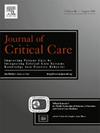感染性休克:过去、现在和前景。
IF 2.9
3区 医学
Q2 CRITICAL CARE MEDICINE
引用次数: 0
摘要
感染性休克仍然是感染最严重的并发症之一,其定义为循环、细胞和代谢功能障碍,并与持续高死亡率相关。从早期对“血液中毒”的描述到20世纪末对败血症作为一种全身性综合征的认识,这一概念发生了显著变化。共识定义和大型临床试验,包括早期目标导向治疗,导致了结构化治疗包和幸存败血症运动的启动,这有助于生存率的逐步提高。目前的管理强调快速识别、及时使用抗菌剂、源头控制、液体复苏和血管加压剂支持,以去甲肾上腺素为一线药物。然而,患者之间的显著异质性使决策复杂化,围绕体液阈值、血管加压剂起始时间以及使用皮质类固醇或免疫调节剂等辅助疗法的争论仍在继续。展望未来,精准医疗和新兴技术有望改善败血症的护理。机器学习和多组学方法正在改进风险预测,使脓毒症亚表型识别成为可能,并指导个性化治疗策略。床边工具评估微循环功能和快速生物标志物分析可以进一步提高预后和复苏。有效的实施科学和对这些工具的严格验证对于将创新转化为改进的成果至关重要。感染性休克管理已经取得了长足的进步,但进一步的进步不仅需要个性化和创新,还需要共同努力,缩小在获得及时诊断、循证治疗和长期生存护理方面的全球差距。本文章由计算机程序翻译,如有差异,请以英文原文为准。
Septic shock: Past, present, and perspectives
Septic shock remains one of the most severe complications of infection, defined by circulatory, cellular, and metabolic dysfunction and associated with persistently high mortality. The concept has evolved markedly, from early descriptions of “blood poisoning” to the recognition of sepsis as a systemic syndrome in the late 20th century. Consensus definitions and large clinical trials, including early goal-directed therapy, led to structured treatment bundles and the launch of the Surviving Sepsis Campaign, which have contributed to gradual improvements in survival.
Current management emphasizes rapid recognition, timely antimicrobials, source control, fluid resuscitation, and vasopressor support, with norepinephrine as the first-line agent. Nevertheless, significant heterogeneity among patients complicates decision-making, and debate continues around fluid thresholds, timing of vasopressor initiation, and the use of adjunctive therapies such as corticosteroids or immunomodulators.
Looking ahead, precision medicine and emerging technologies promise to refine sepsis care. Machine learning and multi-omic approaches are improving risk prediction, enabling identification of sepsis subphenotypes, and guiding individualized treatment strategies. Bedside tools assessing microcirculatory function and rapid biomarker assays may further enhance prognostication and resuscitation. Effective implementation science and rigorous validation of these tools will be critical for translating innovation into improved outcomes.
Septic shock management has advanced substantially, yet further progress requires not only personalization and innovation but also concerted efforts to reduce global disparities in access to timely diagnosis, evidence-based treatment, and long-term survivorship care.
求助全文
通过发布文献求助,成功后即可免费获取论文全文。
去求助
来源期刊

Journal of critical care
医学-危重病医学
CiteScore
8.60
自引率
2.70%
发文量
237
审稿时长
23 days
期刊介绍:
The Journal of Critical Care, the official publication of the World Federation of Societies of Intensive and Critical Care Medicine (WFSICCM), is a leading international, peer-reviewed journal providing original research, review articles, tutorials, and invited articles for physicians and allied health professionals involved in treating the critically ill. The Journal aims to improve patient care by furthering understanding of health systems research and its integration into clinical practice.
The Journal will include articles which discuss:
All aspects of health services research in critical care
System based practice in anesthesiology, perioperative and critical care medicine
The interface between anesthesiology, critical care medicine and pain
Integrating intraoperative management in preparation for postoperative critical care management and recovery
Optimizing patient management, i.e., exploring the interface between evidence-based principles or clinical insight into management and care of complex patients
The team approach in the OR and ICU
System-based research
Medical ethics
Technology in medicine
Seminars discussing current, state of the art, and sometimes controversial topics in anesthesiology, critical care medicine, and professional education
Residency Education.
 求助内容:
求助内容: 应助结果提醒方式:
应助结果提醒方式:


